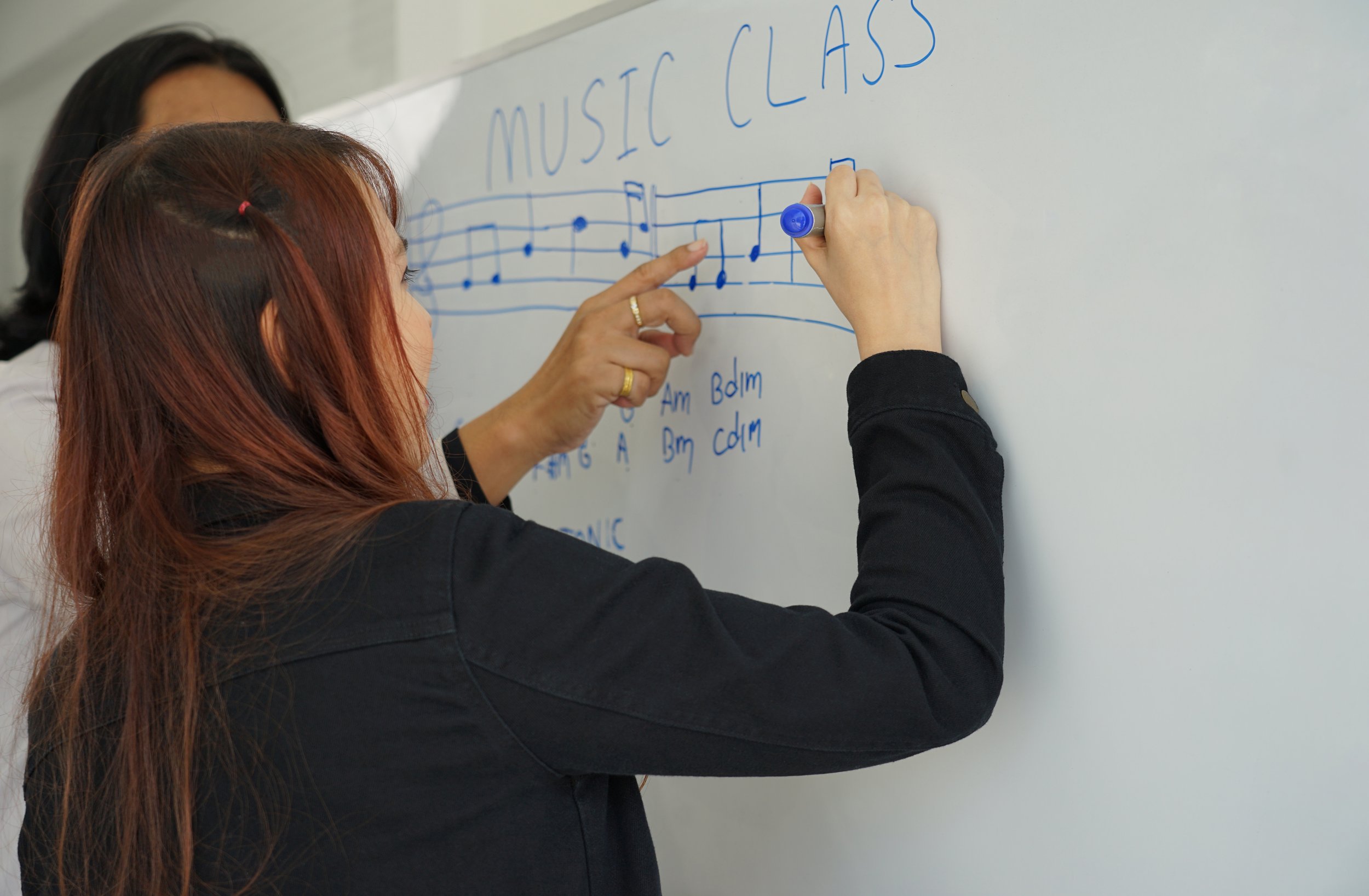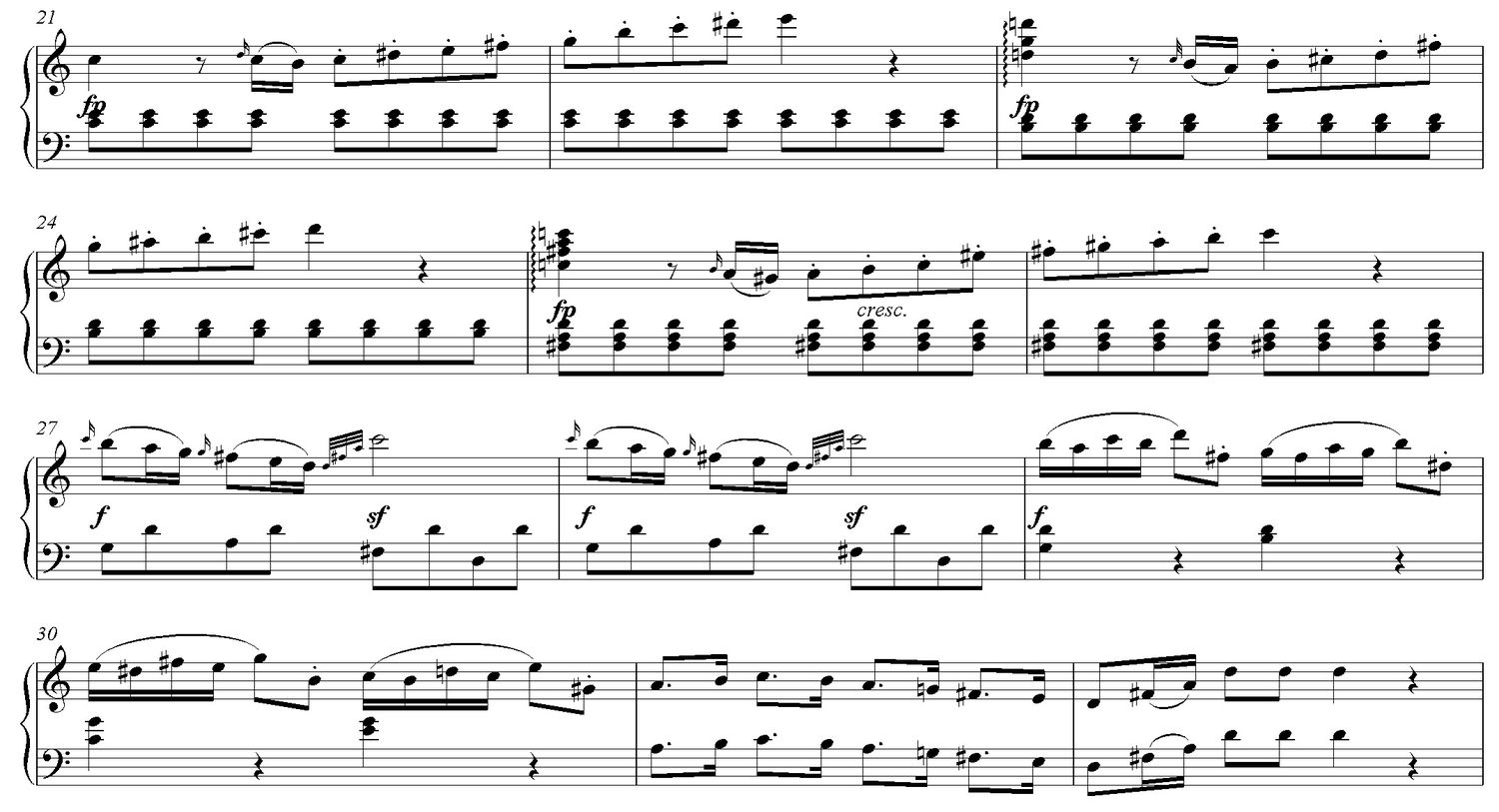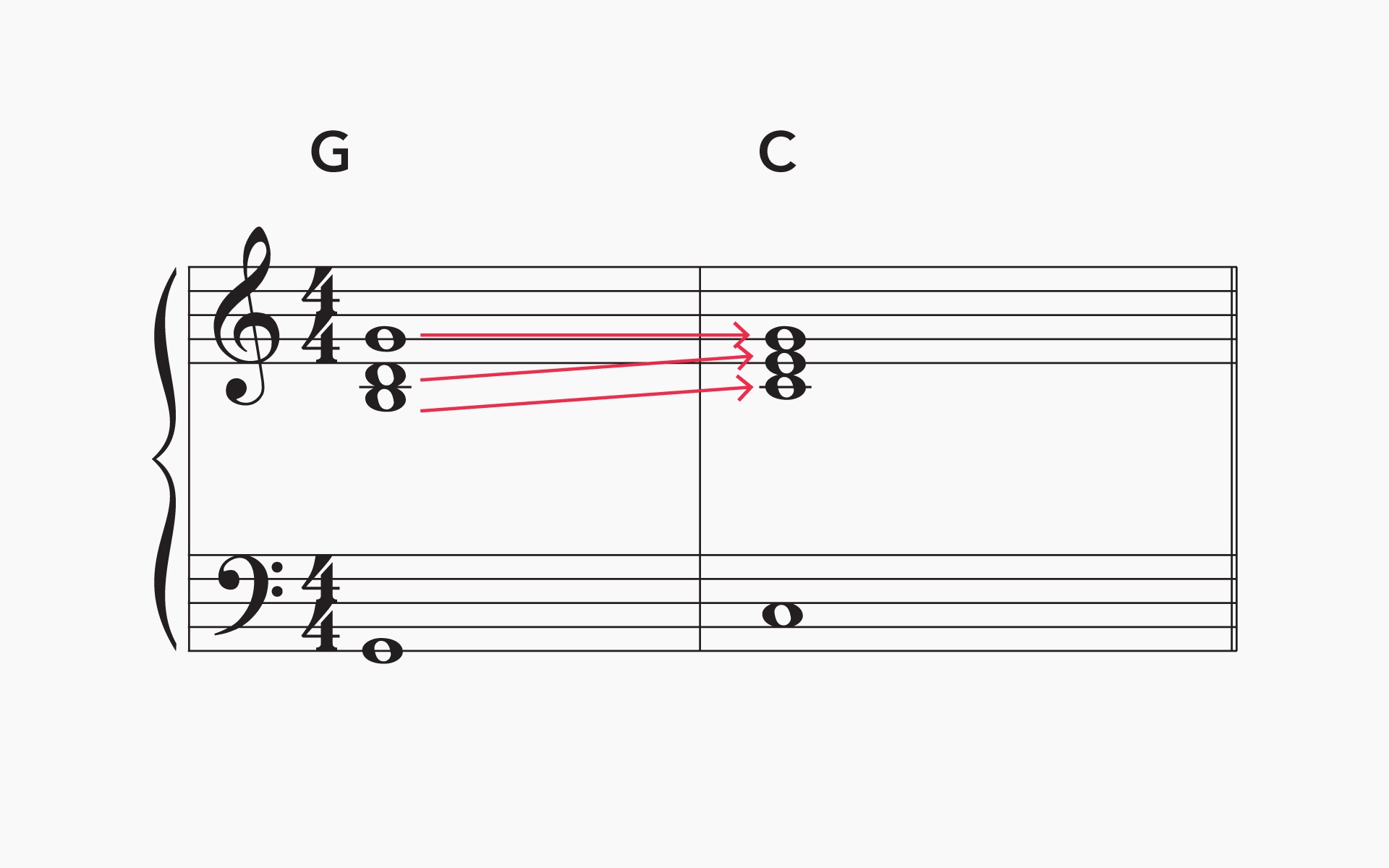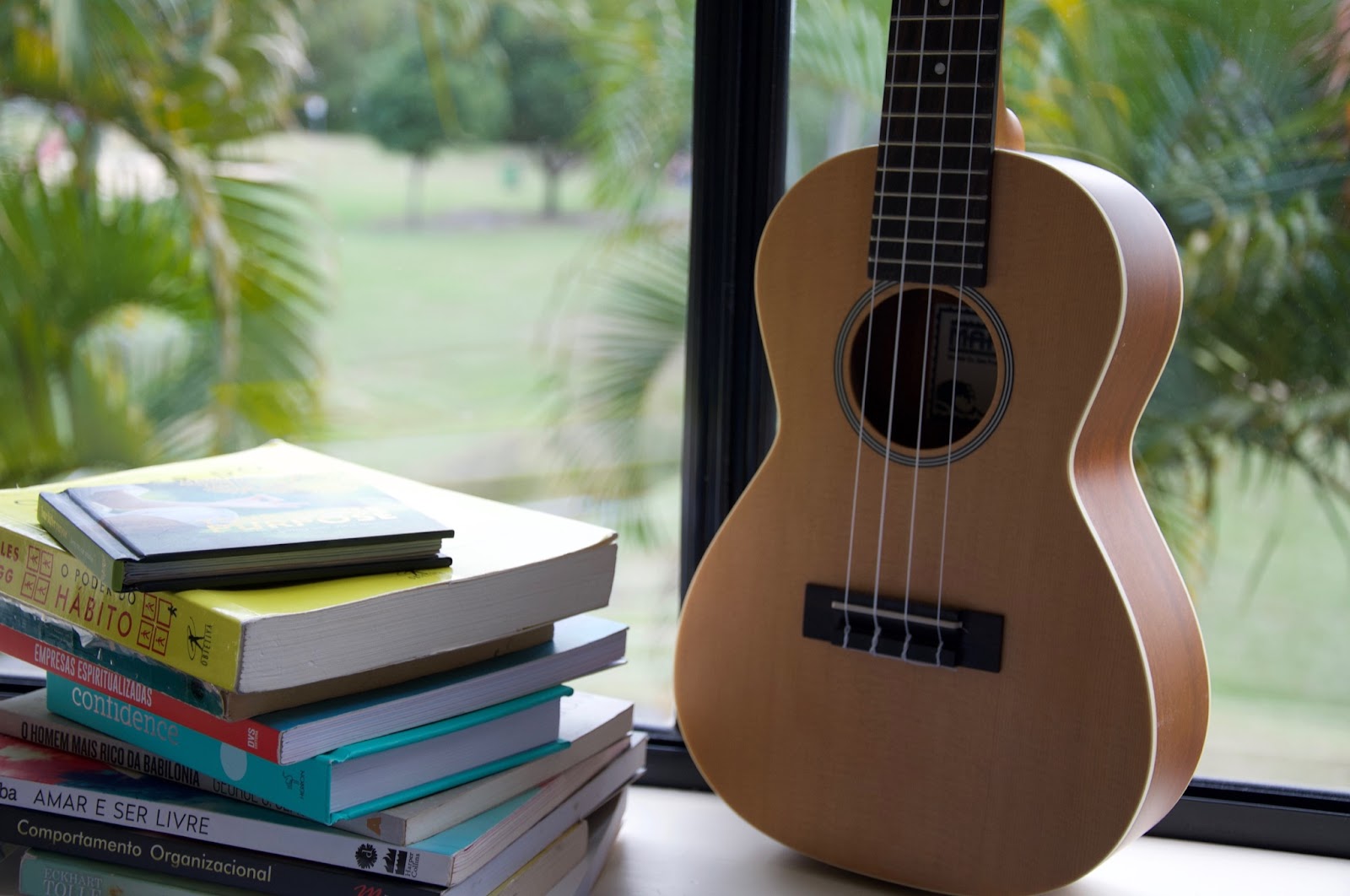Home>Production & Technology>Music Theory>How To Teach Music Theory Lessons


Music Theory
How To Teach Music Theory Lessons
Published: February 1, 2024
Discover effective strategies for teaching music theory lessons. Enhance your students' understanding of music with our comprehensive resources and techniques.
(Many of the links in this article redirect to a specific reviewed product. Your purchase of these products through affiliate links helps to generate commission for AudioLover.com, at no extra cost. Learn more)
Table of Contents
Introduction
Welcome to the fascinating world of music theory! As a music enthusiast and educator, you understand the importance of teaching music theory to enhance musical understanding and proficiency. Whether you are a music teacher, a private tutor, or a musician looking to deepen your own knowledge, this article will provide you with valuable insights into how to effectively teach music theory lessons.
Music theory is the study of the fundamental elements that make up music, such as melody, harmony, rhythm, and structure. By understanding these elements, students can analyze and interpret music with greater depth and appreciation. Moreover, music theory provides a strong foundation for composition, improvisation, and musical expression.
Teaching music theory requires a thoughtful approach, combining theoretical concepts with practical applications and engaging activities. In this article, we will explore strategies for planning engaging music theory lessons, creating effective lesson materials, incorporating listening exercises, exploring practical applications, assessing student progress, and providing tips for effective instruction. By following these guidelines, you will be able to create a dynamic and engaging learning experience that will empower your students to become confident and knowledgeable musicians.
Whether you are just starting out or have years of experience, this guide will provide you with practical tips and insights to enhance your music theory instruction. So, let’s dive in and discover how to create engaging and effective music theory lessons!
Understanding the Basics of Music Theory
Before diving into teaching music theory, it’s important to have a solid understanding of the core concepts and terminology. This will enable you to effectively communicate and explain various musical elements to your students. Here are some essential concepts you should be familiar with:
- Pitch and Melody: Pitch refers to how high or low a sound is, while melody refers to a sequence of pitches that form a musical line. Teach your students about the musical alphabet, intervals, scales, and how these elements create melodies.
- Rhythm and Meter: Rhythm refers to the arrangement of sounds and silences over time, while meter is the organization of beats into regular patterns. Teach students about note values, time signatures, and how to read rhythmic notation.
- Harmony: Harmony is the study of chords and how they relate to each other. Introduce students to triads, chord progressions, and the concepts of consonance and dissonance.
- Form: Form refers to the overall structure of a piece of music. Teach students about the different sections and forms commonly found in music, such as binary, ternary, and rondo forms.
- Dynamics and Expression: Dynamics explore the volume and intensity of music, while expression focuses on the emotional interpretation of a piece. Teach students about different dynamic markings and how to add expression to their performances.
It’s important to present these concepts in a clear and approachable manner. Use visual aids, interactive examples, and practical exercises to engage your students and help them grasp these fundamental musical concepts. Remember to reinforce the connections between theory and practice, showing your students how these concepts apply to the music they are learning and playing.
As you introduce these foundational concepts, be attentive to the learning styles and abilities of your students. Some may grasp certain concepts more quickly, while others may need additional examples or hands-on activities to solidify their understanding. Adapt your teaching methods to accommodate different learning preferences, such as visual, auditory, or kinesthetic approaches, to ensure that all students can fully grasp the basics of music theory.
By establishing a strong foundation in the basics of music theory, your students will have the tools necessary to explore more advanced concepts and analyze music with a deeper level of understanding. This sets them up for future success in their musical journey.
Planning Your Music Theory Lessons
Effective planning is crucial when teaching music theory. It ensures that your lessons are organized, cohesive, and effectively address the learning objectives. Here are some key steps to consider when planning your music theory lessons:
- Define your learning objectives: Determine the specific goals you want your students to achieve in each lesson. Is it understanding a particular concept, analyzing a piece of music, or applying theory to composition? Clearly defining your objectives will help you structure your lessons accordingly.
- Sequence your topics: Consider the logical progression of topics, starting with the foundational concepts and gradually moving towards more advanced material. This will help students build a strong understanding from the ground up and avoid overwhelm.
- Break it down: Dividing complex concepts into smaller, digestible chunks makes it easier for students to understand and absorb the information. Break down each topic into sub-topics and plan activities or exercises to reinforce understanding at each stage.
- Create a timeline: Allocate specific timeframes for each lesson and ensure that you have enough time to cover the planned material without rushing. Be realistic about the amount of content you can cover in each lesson to avoid overwhelming your students.
- Prepare materials and resources: Gather or create materials, such as worksheets, handouts, and online resources, to support your lessons. Ensure they are age-appropriate, visually appealing, and aligned with your learning objectives.
- Integrate technology: Leverage technology tools like educational apps, music theory software, and multimedia resources to enrich your teaching and engage students. These can provide interactive and engaging experiences that make learning more enjoyable.
- Consider diverse learning styles: Be mindful of the different learning styles and preferences of your students. Incorporate a variety of teaching methods, such as visual aids, auditory examples, and kinesthetic activities, to cater to different learning modalities.
Remember to leave room for flexibility within your lesson plans. Not all students will progress at the same pace, and unexpected questions or discussions may arise. Adapt your lesson plan as needed, allowing for additional time or adjusting the order of topics to meet the needs of your students.
By carefully planning your music theory lessons, you provide structure and guidance that will enhance the learning experience for your students. With a well-structured plan in place, you can confidently lead engaging and effective lessons that empower your students to develop a strong understanding of music theory.
Creating Engaging Lesson Materials
Engaging lesson materials are essential for capturing the attention and interest of your students during music theory lessons. By using a variety of interactive and visually appealing materials, you can enhance their learning experience and make the lessons more enjoyable. Here are some tips for creating engaging lesson materials:
- Visual aids: Utilize visual aids, such as charts, diagrams, and infographics, to illustrate complex concepts in a more accessible way. Visuals help students understand and remember information better, making the learning process more efficient.
- Interactive worksheets: Design interactive worksheets that allow students to actively engage with the material. Incorporate fill-in-the-blank exercises, matching activities, or even crossword puzzles to reinforce key concepts and promote critical thinking.
- Online resources: Take advantage of the vast array of online resources available for music theory education. There are websites, apps, and software that offer interactive lessons, quizzes, and games. These resources can make learning more interactive and enjoyable for students of all ages.
- Musical examples: Include musical examples from a variety of genres and time periods to make the learning experience more diverse and interesting. Playing or analyzing different pieces of music not only reinforces theoretical concepts but also helps students develop their listening skills.
- Real-world applications: Connect music theory to real-world applications to make it more relevant and practical for your students. For example, demonstrate how understanding chords and progressions can help with songwriting or how knowledge of scales and modes is useful for improvisation.
- Group activities: Incorporate group activities and collaborative projects to foster teamwork and engagement. For instance, divide the class into small groups and assign them a composition project or a music analysis task. This encourages active participation and fosters a sense of camaraderie among students.
- Multimedia presentations: Use multimedia presentations, combining text, images, audio, and video, to present information in a dynamic and engaging way. This approach caters to different learning styles and enhances the overall comprehension and retention of the material.
When creating lesson materials, be mindful of the age and skill level of your students. Adapt the content and presentation style to suit their needs, ensuring that the materials are accessible and appropriately challenging. Remember that the goal is to create a stimulating and supportive learning environment that encourages exploration and growth.
By incorporating engaging lesson materials, you can make music theory lessons more interactive, memorable, and enjoyable for your students. This not only enhances their understanding of musical concepts but also fosters a love for learning and a lifelong appreciation for music.
Incorporating Listening Exercises
Listening exercises are a valuable tool for teaching music theory as they help students develop their listening skills and train their ears to recognize various musical elements. By incorporating listening exercises into your lessons, you can provide a more immersive and comprehensive learning experience. Here are some tips for incorporating effective listening exercises:
- Select diverse musical examples: Choose a wide range of musical examples from different genres, styles, and time periods. This exposes your students to a variety of musical elements and helps them develop a broader understanding of how theory is applied in different contexts.
- Focus on specific musical elements: Design listening exercises that target specific elements of music theory, such as melody, harmony, rhythm, or form. For example, ask students to identify chord progressions, analyze melodic patterns, or identify rhythmic structures in the provided musical excerpts.
- Engage in active listening: Encourage students to actively listen to the music by guiding them to pay attention to specific details. Ask them to identify key changes, rhythmic patterns, or instrument timbres. This helps develop critical listening skills and trains their ears to recognize musical nuances.
- Provide guided listening questions: Accompany the listening exercises with thought-provoking questions to guide students’ analysis and reflection. For example, ask them to explain the emotional impact of a particular musical passage or discuss the use of dynamics and expression in a piece.
- Facilitate class discussions: After the listening exercises, have class discussions to encourage students to share their observations and interpretations. This not only reinforces their understanding of the musical concepts but also encourages analytical thinking and creative expression.
- Use technology: Utilize technology tools to enhance the listening experience. There are various software and online platforms available that allow you to create playlists, annotate musical scores, and provide interactive listening exercises. These resources can enhance engagement and make the learning process more interactive.
- Link listening exercises to theory concepts: Connect the listening exercises to the theoretical concepts you have been teaching. Explain to students how the musical examples demonstrate the application of those concepts. This helps bridge the gap between theory and practice, providing a more holistic understanding of music.
By incorporating listening exercises into your music theory lessons, you give students the opportunity to develop their listening skills and train their ears to recognize and appreciate the intricate details of music. This not only deepens their understanding of theory but also enhances their overall musicality.
Remember to make listening exercises interactive and participatory, encouraging students to actively engage with the music and reflect on their observations. By fostering a culture of active listening, you create a more immersive and enriching learning environment.
Exploring Practical Applications of Music Theory
Music theory is not just an abstract concept; it has practical applications that can be explored and experienced in various aspects of music. By showcasing the practical applications of music theory, you can help your students understand how theory connects to real-life musical situations. Here are some ways to explore the practical applications of music theory in your lessons:
- Composition and Songwriting: Teach your students how theory concepts can be applied to composing original music. Show them how to construct melodies using scales and intervals, create harmonies with chord progressions, and develop interesting rhythmic patterns. Encourage them to experiment and apply their theoretical knowledge in their composition projects.
- Improvisation: Demonstrate how theory can be applied to improvisation. Teach your students about scales, modes, and chord progressions that are commonly used in improvisation. Show them how to navigate these elements to create melodic solos and improvisational phrases. Provide opportunities for them to practice improvisation and explore their creativity.
- Arranging and Orchestration: Discuss how music theory contributes to arranging and orchestrating music. Explore concepts like voicing, instrumentation, and the role of different instruments in an ensemble. Show students how to adapt and arrange pieces of music to suit different instruments or ensemble settings.
- Music Analysis: Guide students in analyzing and studying pieces of music using music theory concepts. Help them understand the structure, key changes, chord progressions, and melodic motifs in the music they are studying. By analyzing music through a theoretical lens, students can gain a deeper appreciation for the compositional choices made by the composer.
- Performance Interpretation: Show how theory can inform performance interpretations. Teach students how dynamics, articulation, and phrasing can be influenced by theoretical considerations. Encourage them to think critically about the theory behind their interpretative choices, helping them develop a deeper understanding of the music they perform.
- Collaborative Music Making: Engage students in collaborative music-making projects that require the application of theory. This could involve forming small ensembles and performing arrangements or original compositions. By working together and applying their theoretical knowledge, students can experience firsthand how theory enhances the musical collaboration process.
By exploring the practical applications of music theory, you equip your students with the tools to apply their theoretical knowledge in different musical contexts. This not only enhances their musical skills but also fosters creativity, musical confidence, and a deeper understanding of the music they encounter.
Remember to provide opportunities for hands-on exploration and experimentation, allowing your students to actively engage with the practical applications of music theory. By doing so, you empower them to become well-rounded musicians who can apply their theoretical knowledge in meaningful and creative ways.
Assessing Student Progress
Assessing student progress is a crucial component of music theory instruction. It allows you to gauge your students’ understanding and proficiency in various concepts and determine their areas of improvement. Here are some tips for effectively assessing your students’ progress in music theory:
- Regular assessments: Incorporate regular assessments, such as quizzes, tests, or assignments, to evaluate your students’ understanding of key concepts. These assessments can be in written or practical format, depending on the nature of the material being covered.
- Individual assessments: Use one-on-one assessments to assess a student’s understanding in a more personalized and detailed manner. This could involve asking them to demonstrate a specific theory concept, perform a composition they have written, or analyze a piece of music.
- Listening assessments: Include listening assessments to evaluate students’ ability to recognize and identify musical elements. Play excerpts of music and ask students to identify the key, chord progression, or rhythmic pattern being played.
- Performance evaluations: Assess students’ practical application of music theory concepts through performance. This could involve evaluating their ability to accurately execute dynamics, phrasing, or the interpretation of a piece based on their understanding of musical structure and theory.
- Group projects: Assess students’ collaborative skills and application of theory through group projects. Assign them tasks that require composition, arrangement, or performance in an ensemble setting. Evaluate their ability to work together, apply theory, and produce a cohesive musical outcome.
- Written assignments: Assign written assignments that allow students to demonstrate their understanding of theory concepts in a more detailed and analytical way. This could involve analyzing a piece of music, composing a short piece using a specific theory concept, or explaining the application of theory in music performance.
- Verbal assessments: Engage students in verbal assessments to assess their ability to articulate their understanding of theory concepts. Encourage them to explain theory concepts, analyze music, or discuss the practical applications of theory in music-making.
When assessing student progress, it is important to provide constructive feedback. Point out areas of strength and areas that need improvement, and offer specific suggestions for growth. Individualized feedback helps students understand their progress and encourages them to continue developing their skills and knowledge.
It is also beneficial to involve students in the assessment process by encouraging self-reflection and self-assessment. Encourage them to evaluate their own understanding and progress, and provide opportunities for them to set goals and track their growth throughout the learning process.
By implementing a variety of assessment methods, you can gain a comprehensive understanding of your students’ progress in music theory. This allows you to tailor your teaching to meet their needs, provide targeted instruction, and support their ongoing development as musicians.
Tips for Effective Music Theory Instruction
Teaching music theory is an art that requires both knowledge of the subject matter and effective instructional techniques. Here are some tips to help you deliver engaging and effective music theory instruction:
- Make it relatable: Relate theory concepts to genres and styles of music that your students enjoy. Show them how theory applies to the music they listen to and play, making the subject matter more relevant and relatable.
- Break it down: You can make complex theory concepts more approachable by breaking them down into smaller, more digestible chunks. Present information in a clear and sequential manner, building upon previous knowledge in each lesson.
- Provide ample examples: Use a variety of musical examples to illustrate theory concepts. Show how different composers and musicians have applied these concepts in their compositions. This helps students connect theory to real-world musical situations.
- Facilitate active learning: Engage your students in active learning by incorporating hands-on activities, group discussions, and interactive exercises. Encourage them to apply their theoretical knowledge through practical exercises like composition, improvisation, and arranging.
- Encourage critical thinking: Foster critical thinking skills by asking thought-provoking questions that challenge students to analyze and interpret music using theory concepts. Encourage them to think beyond surface-level understanding and develop a deeper appreciation for the music they study.
- Use a variety of teaching methods: Cater to different learning styles by incorporating a variety of teaching methods. Combine visual aids, auditory examples, and kinesthetic activities to engage students with different preferences and enhance their understanding.
- Build a supportive learning environment: Create a safe and encouraging space for students to ask questions, make mistakes, and explore their musical creativity. Provide constructive feedback that focuses on growth and improvement, and foster a sense of community among your students.
- Integrate technology: Leverage technology tools to enhance your instruction. Use music theory software, digital resources, and online platforms to provide interactive lessons, practice exercises, and engaging multimedia content.
- Keep it fun: Inject creativity and fun into your music theory lessons. Use games, competitions, and music-related anecdotes to liven up the learning experience. When students enjoy the process, they become motivated to learn and excel.
- Continuously learn and adapt: Stay updated with the latest research, resources, and teaching strategies in music theory. Attend workshops, participate in professional development programs, and collaborate with other music educators to continually refine your teaching skills.
Remember, effective music theory instruction goes beyond imparting knowledge. It involves inspiring a love for learning, nurturing musical curiosity, and empowering students to explore and express themselves through music. By implementing these tips, you can create an engaging and enriching learning environment that sets your students on a path to musical success.
Conclusion
Teaching music theory is an exciting and rewarding endeavor that allows you to share your passion for music and empower students to become knowledgeable musicians. By understanding the basics of music theory, planning engaging lessons, creating interactive materials, incorporating listening exercises, exploring practical applications, assessing student progress, and implementing effective instructional techniques, you can create a dynamic and enriching learning experience for your students.
Music theory provides a strong foundation for musical understanding, creativity, and expression. It enables students to analyze, interpret, and appreciate music on a deeper level. By incorporating a variety of teaching methods and ensuring the practical relevance of the concepts, you can help students see the value and applications of music theory in their own musical journeys.
Remember, effective music theory instruction goes beyond teaching concepts and techniques. It involves fostering a love for learning, nurturing musical curiosity, and providing a supportive environment for exploration and growth. By using a combination of visual aids, interactive activities, technology tools, and real-world connections, you can create a stimulating and engaging learning environment that inspires students to discover the wonders of music theory.
As you embark on your journey as a music theory educator, continue to expand your own knowledge and refine your instructional techniques. Stay open to new ideas and approaches, and always seek opportunities for professional development and collaboration with other music educators.
Ultimately, through effective music theory instruction, you have the power to shape the musical journeys of your students, equipping them with the knowledge and skills they need to become confident and accomplished musicians. Embrace this role with enthusiasm and dedication, and watch as your students’ understanding and appreciation for music theory flourish.











